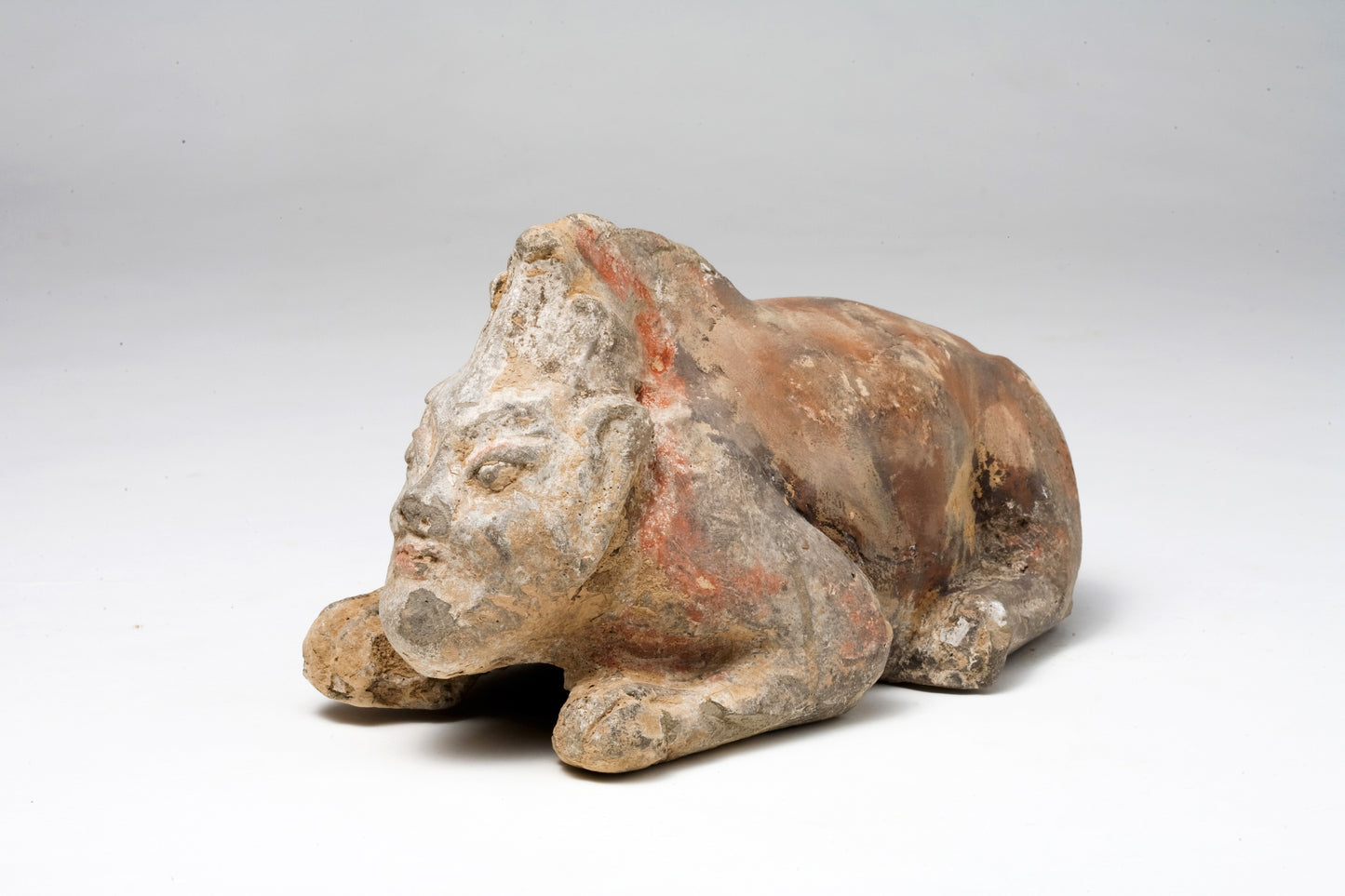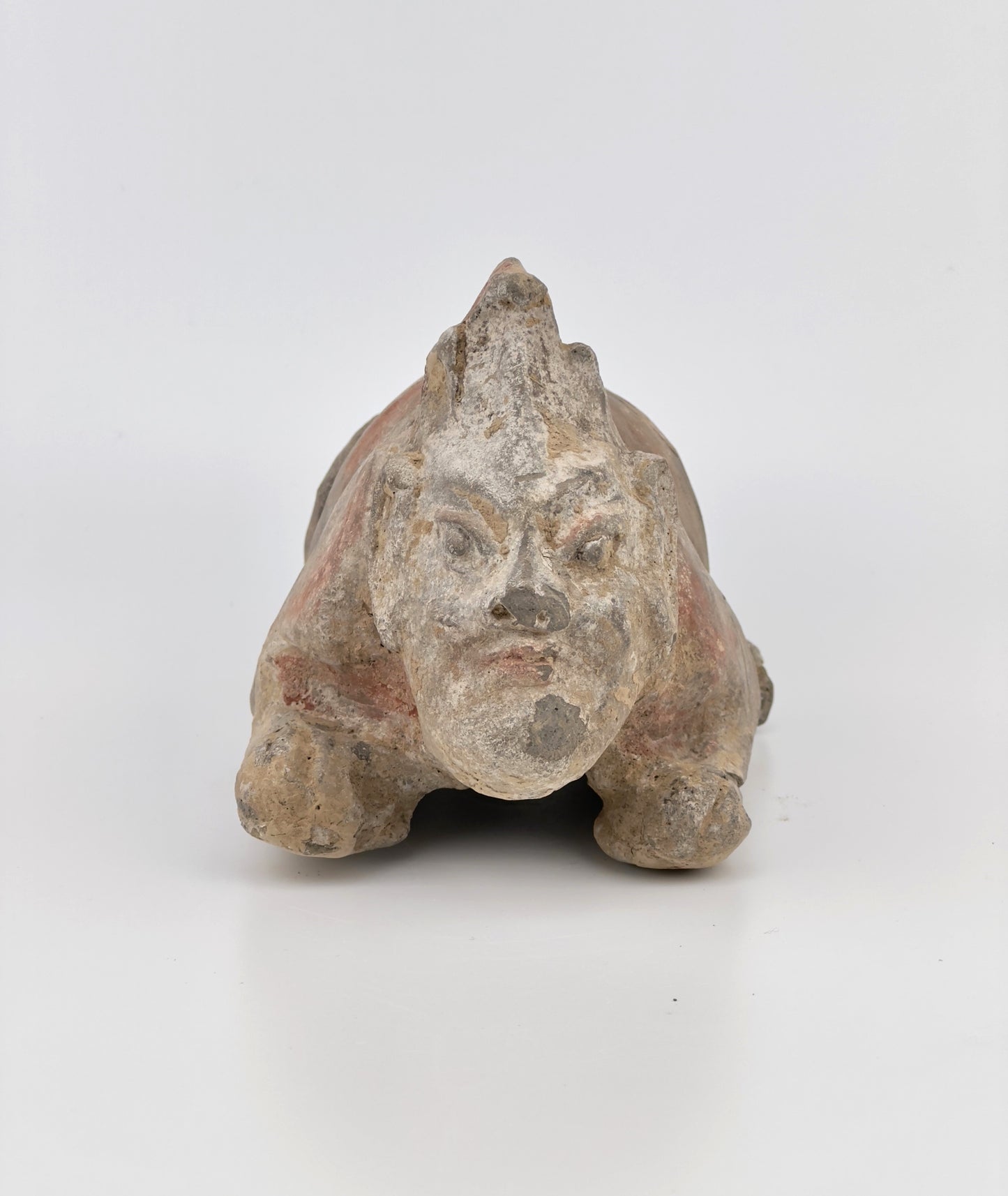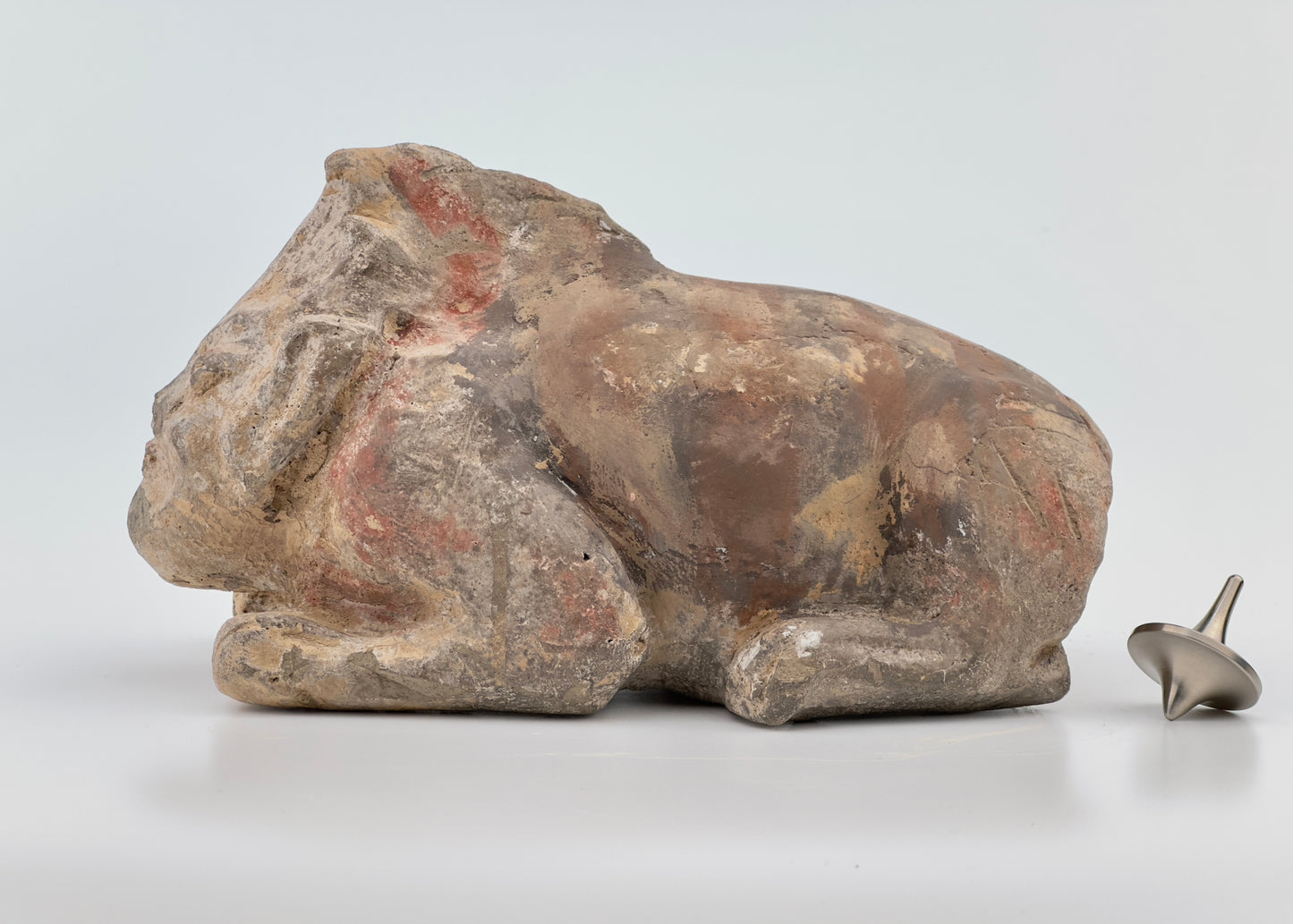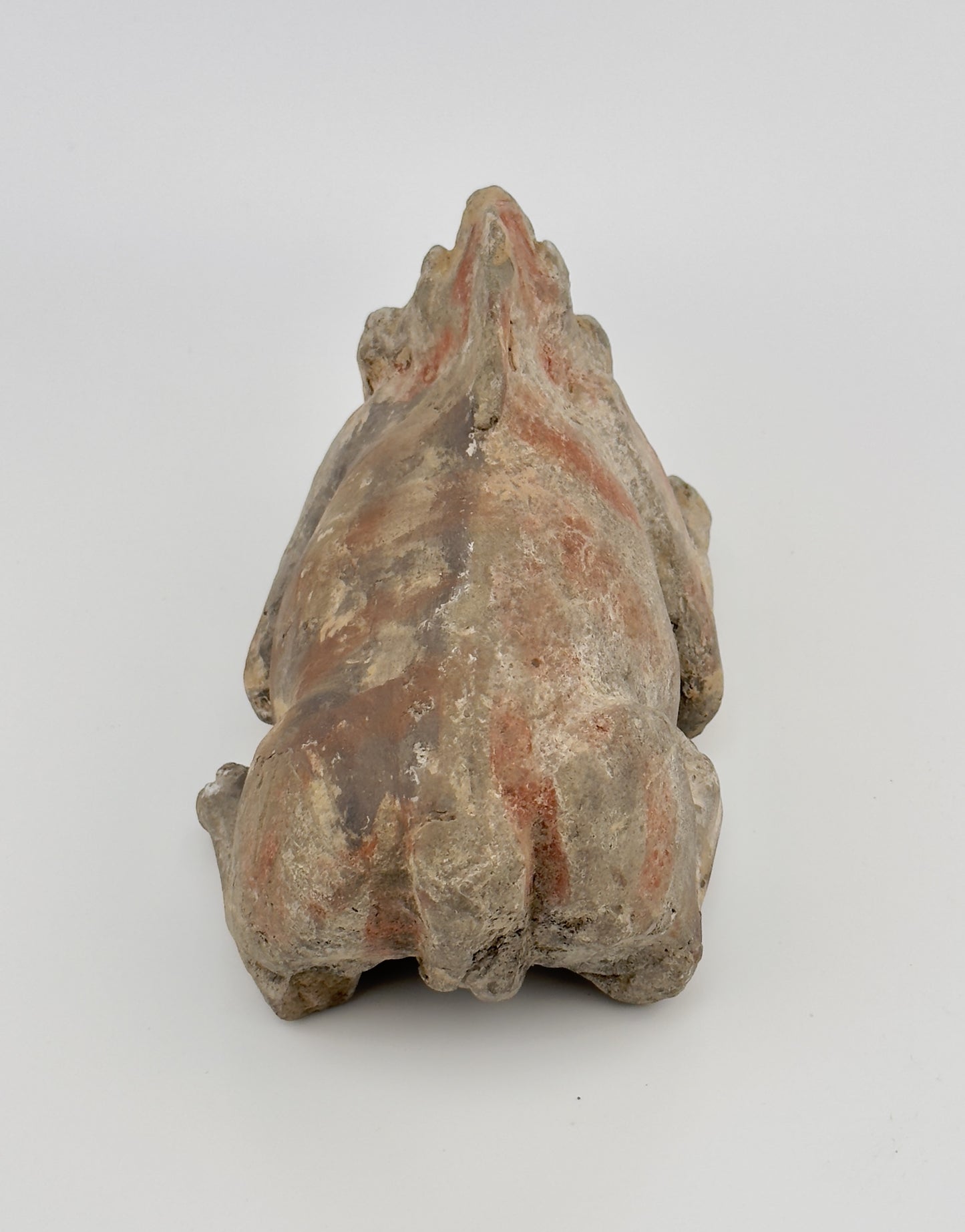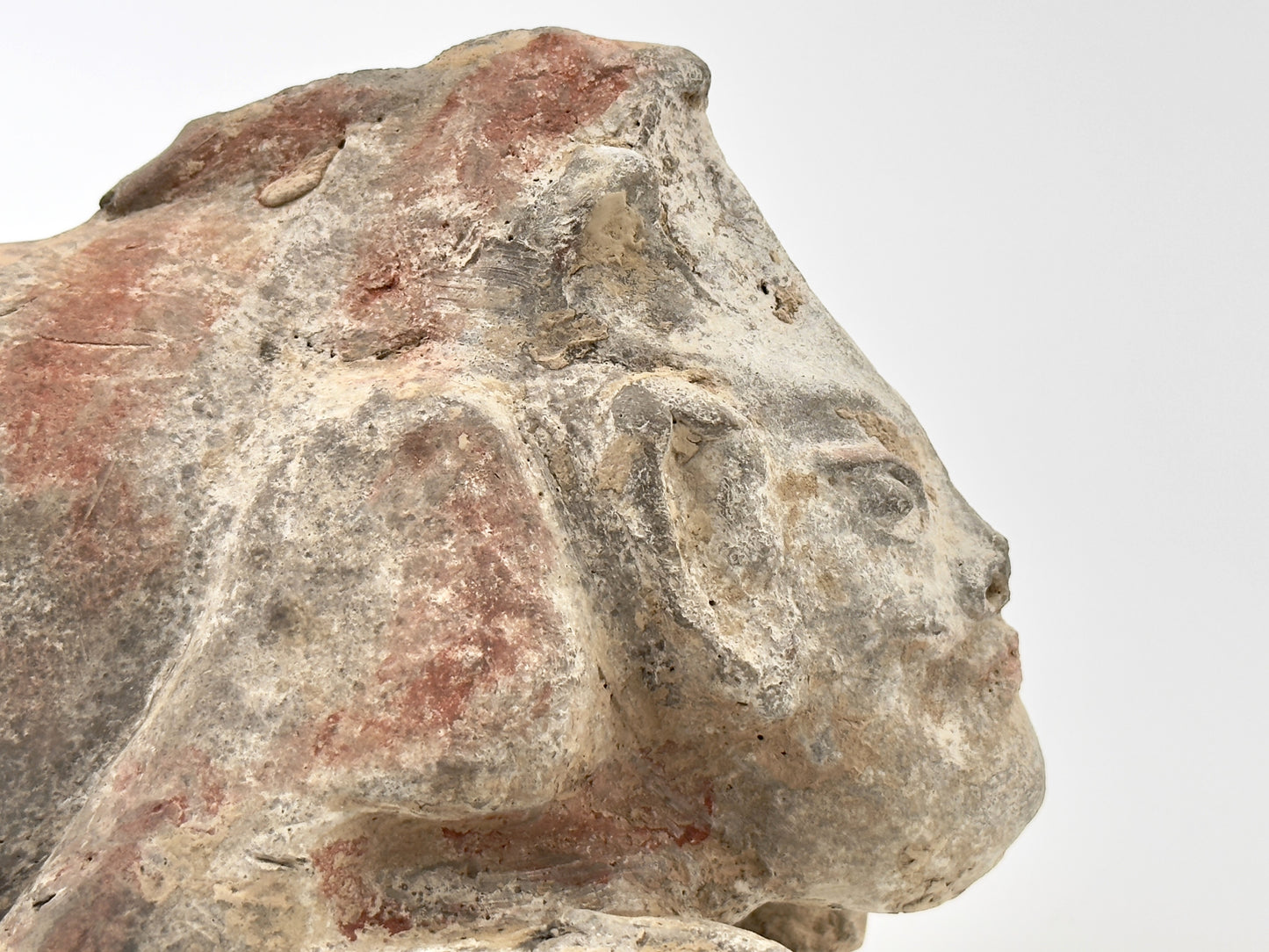AUA Oriental Art
Guardian(Half human half beast) Pottery Figure, Northern Wei-Tang Dynasties
Guardian(Half human half beast) Pottery Figure, Northern Wei-Tang Dynasties
Couldn't load pickup availability
This guardian figure represents a fusion of human and beast, a common motif symbolizing protection in Chinese lore, resembles the Egyptian Sphinx. The Northern Wei Dynasty, known for its patronage of Buddhism, often depicted such guardians at temple gates or tombs to ward off evil spirits and protect sanctity. This particular piece, with remnants of paint, suggests it was once vividly adorned, adding to its spiritual significance and artistic value.
Date : Northern Wei-Tang Dynasty(4-7th century)
Size : 12cm (Height) x 21cm(diameter)
Condition : Good
Provenance : Acquired in 1999, Hongkong
Reference : Princeton University Art Museum - Object Number y1950-84
https://artmuseum.princeton.edu/collections/objects/23895
* Pottery figures from the Northern Wei Dynasty
The Northern Wei Dynasty (386-534 CE) was a period of profound cultural and artistic development in China, particularly noted for its contributions to Buddhist art. Pottery figures from this era often reflect the fusion of Chinese artistic traditions with Buddhist iconography. The remnants of paint on some figures suggest they were once brightly colored, which would have added to their visual impact and sacred aura.
Crafted from terracotta, these figures could range from representations of Buddha and bodhisattvas to mythical creatures and guardian figures, serving religious and protective functions. These figures were typically used to adorn temples and tombs, illustrating a blend of reverence and artistry that characterized the period.
Share


